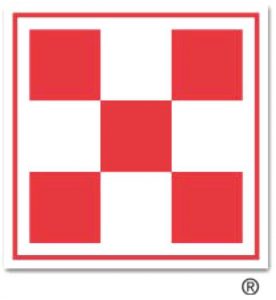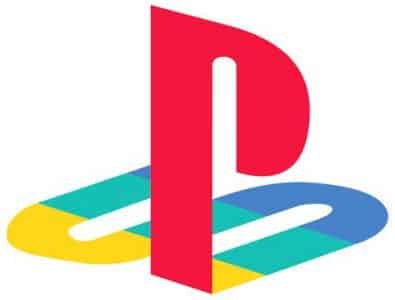Hebrew Audio & Video Translation Services
Video content is King
Send your project viral with the help of the UK’s leading Hebrew audio and video translation company.
Let us help you reach new markets and promote your content, with our expertise in re-versioning your audio and video content.
If a picture tells a thousand words, can you imagine what a video can do? Just look at the way social media is progressing, with the likes of YouTube, Vimeo, Snapchat and Vine; we are certainly the video generation, and so are your customers.
You will get an all-inclusive, cost-effective and hassle-free video translation solution.
From transcribing, translating a video and voicing it over, to creating Hebrew subtitles and graphically editing captions or on-screen text for a foreign language version of your video – we can do it all!
Impress your customers with a Hebrew version of your audio or video content, including business presentations, corporate and educational videos, e-learning courses, feature films, promo videos and many more.
GoLocalise adhere to rigorous quality assurance processes to monitor quality and precision throughout every stage of a translation project.
You won’t need to worry about the technical side or whether your product meets industry standards.
Our experienced project managers are all trained in voice over and subtitling and are well aware of the requirements and constraints involved.
We work with industry-standard subtitling software to thoroughly check all subtitle files before delivery, to ensure you get the highest quality possible.
We have more than 15 years’ experience in the localisation field, so you are in safe hands.
You can rest assured and trust us to deliver an accurately timed and perfectly translated Hebrew version of your script, audio or video content!
Whether you are a corporate client or a translation or production company, we will adapt to your needs so that you can add video or audio translation services to your portfolio of services.
We are only a call or email away or, if you prefer, visit our get-a-quote page to discuss your video or audio project in detail.
You will receive a Hebrew version of your video or audio file adapted to your project specifications and needs, and best of all, it will WOW your customers.
GoLocalise has been Atlas’s sole provider of translation and foreign voiceover services since 2011. Their friendly and efficient team have localised a range of technical and behavioural projects and in a variety of multimedia formats. Atlas considers GoLocalise to be our localisation partner; trusted to consistently deliver on time and to a high standard.
Learn more about Translation Services
Let's get started!
Create High Impact, First Time With GoLocalise As Your Audio And Video Translation Service Provider
- WOW your clients with first-class translations carried out by translation experts in that particular industry sector.
- Stringent quality control processes - subtitling (English) templates created and checked in-house, and timed to professional standards.
- Industry leading subtitling software to create subtitles that are perfectly timed to the exact frame and aesthetically positioned around shot changes.
- Your message faithfully and accurately delivered by experienced native subtitlers only.
- All translations are thoroughly quality checked by our experienced project managers before final delivery.
- You will receive ready-to-use videos with translated burnt-in subtitles - open captions - that are ready to be uploaded to your website. You can customise the style and look of the subtitles (font, size, colour, positioning, etc.).
- If you prefer to give your clients or viewers flexibility, why not go for subtitles that can be switched on and off in multiple languages? You can receive closed captions in the format of your choice – ready to be uploaded to YouTube or Vimeo channels, DVD or Blu-Ray.
- Go the extra mile by localising all your content. On-screen text and captions in your video can be translated and graphically edited, so that you receive a flawless foreign language version.
Let's get started!
Why Choose Us?

Leave your project to the experts at GoLocalise so that you can relax and be assured of getting top-notch results
Every single detail will be analysed, studied and looked after so that you do not need to worry. Some would say it’s not too classy to blow our own trumpet… but we just like to point out two very important details.
We have achieved ISO 9001 Quality Management certification in recognition of our consistent performance and high standards, and ISO 14001 Environmental Management because we care about our planet!
And if you are still curious and want to know more about us, why not have a look at our studio page.
GoLocalise offers transcription services for audio and video files in over 100 languages including English. Our expert team of transcribers will create a text version of your video or audio file, and we can also translate and/or voice over your transcript.
There are different variations of this service, all of which will result in a text document containing the dialogue from the source audio or video file:
This will include absolutely everything that is part of the footage, such as “ums, uhs”, false starts, noise words, any sounds, etc. The transcriber will also leave the speech as it is, even in the case of incorrect phrase or language selection, colloquialisms and poor grammar.
Word For Word Transcriptions
This type of transcription will only include the speech, but the transcriber will leave out any redundant or unnecessary elements such as nervous stutters, false starts, etc. The speech will however stay the same and will not be edited.
General Transcriptions
With this type of transcription, the style will be “written” more than “spoken”. Any grammar or syntax errors will be corrected in the process, and the text will read well and be grammatically correct.
We specialise in transcriptions that will be used as voice over scripts, (on-screen) captions and subtitles. Our experience in these fields has made us the top choice for clients all over the world who want to re-version their existing audiovisual content into several different language versions.
Transcriptions can be used for different purposes – as a script for a voice over session, or as reference when editing raw footage for example. We can also produce a time-coded and condensed version of the transcription that can be used for subtitling purposes.
No matter if your content is in English or any other language, we can help!
When localising and translating videos (whether you choose subtitling or voice over), you’ll find that often there are several elements that need to be localised. These elements can be on-screen graphics, text and/or captions.
Our expert project managers will review the video or project file and advise which elements would be best subtitled or graphically edited. If you do not have the project files, worry not; one of our expert editors will be able to re-create the graphics, captions and titles of your video.
Our expert editors work with a multitude of software: to localise graphics we use Photoshop or Illustrator; and After Effects and Final Cut Pro to create motion graphics and visual effects.
Once all elements are in the video, and the graphic elements have been created and localised, we can then rebuild the video and export it to whichever format and codec you need. We’ll prepare your video project for any platform, including PAL, NTSC, VOD, the Internet, smartphones, game consoles, mp3 players and tablets.
With our facilities and highly skilled operators, your videos are in safe hands!
3 Steps To High Quality Assurance
We use continuous quality control processes to monitor quality and accuracy at each and every stage of a translation project.
We use continuous quality control processes to monitor quality and accuracy at each and every stage of a translation project.
Each translated document is edited by a second translator to ensure accuracy and to address any linguistic issues. Again, the work is assigned to a specialist according to subject matter.
At GoLocalise, the translation process goes one step further with a final quality assurance step. A third translator revises the document to verify that editing changes and formatting have been properly implemented, and that there are no omissions or typographical errors. Every translation is checked word for word against the original and any changes that are required are made to ensure that the correct terminology is used consistently throughout the text.
Learn more about Translation Services
Let's get started!

Working alongside translation & production companies
Having a Having a strong audiovisual departmentHaving a on your side makes all the difference!
With GoLocalise you get an experienced and motivated team of professionals that work regularly alongside translation and production companies.
We understand the technical requirements necessary to produce perfect foreign language and English voice overs.
Our project managers will assist you along the way and we’ll break down the process and present it to you without the big words or technical industry jargon, so you don’t need to worry about the technical aspects and can simply concentrate on growing your business.
By working with GoLocalise you’ll be able to offer additional services, i.e., voice over, subtitling and translation to your clients, with a partner who will deliver and on whom you can truly rely.
When working with translation companies we provide easy-to-follow guidelines so that you can provide your own translations for us to “convert” into subtitles, or voice over your translated scripts.
Or if you prefer, we can take the entire project off your hands and keep things simple for you – it’s your call!
We’re equally used to working with production companies, so we can deliver your translations or subtitles in any language and format of your choice – either burning-in the subtitles onto the video for you, or supplying you with XML or PNG files for you to do yourself – Adobe After Effects and Final Cut Pro ready files.
Reach your target market
Don’t leave your important communication to chance. Make sure your message is clearly understood by your audience and choose GoLocalise for your next voice over project. Check out our latest case studies.
We have thousands of passionate and professional voice over artists ready to work with you. Meet some of them in our blog stories.
No matter the type of voice you are looking for, we’ll either have it in our books or find it and source it for you. We’ll organise a casting and ensure you get the perfect voice to suit your needs.
You will also benefit from having your own dedicated project manager – a single point of contact – to guide you through your project, answer any questions you may have and make things a whole lot easier.


Meet your dedicated project manager
Your project will be in the safe hands of one of our multilingual project managers. They will guide you through every step and ensure you understand the process.
Our industry has a tendency to use lots of technical jargon but your dedicated project manager will be on-hand to untangle the mess and explain all you need to know to ensure you only pay for what you need.
If you need help in choosing the right voice over talent to deliver your message then just ask your project manager.
From booking our voice over recording studios to ensuring you project is delivered on time in your chosen media, relax and let your experienced project manager take care of everything.
You will receive unparalleled attention to detail and customer focus at competitive prices. You’ll wish everything was as easy as a GoLocalise voice over!
Your most discerning customers will thank you for choosing our modern state-of-the-art recording studios. Every detail has been carefully thought through for your comfort, leaving you to simply focus on what matters most – the voice over session.
Your recordings will sound beautiful and crystal clear thanks to our high-end studio sound-proofing and audio equipment, i.e. ProTools HD and Neumann microphones.
Maximise your budget by reducing the need for retakes with the help of our experienced in-house sound engineers who will professionally capture and edit your audio.
And for those recordings in languages which neither you nor your client speak, we’ll bring a qualified pro to your session to add that essential ingredient.
To make you feel right at home, we provide high-speed Wi-Fi Internet and air-con is available. And last but not least, we have the biggest cookie jar you’ve ever seen, that’ll make your custom brew taste even sweeter!

A Translation Masterclass
At GoLocalise nothing is too much hassle! The expert team of project managers, translators and linguists are always at hand to ensure your content is perfectly localised – whatever the media. You’ll benefit from a company with over 15 years’ experience, an in-house subtitling team, and in-house state-of-the-art recording facilities!
Audiovisual translation, or AVT, is a highly specialised type of translation, which is increasingly popular in today’s digital world. We are surrounded by audiovisual content, so it makes sense that there is a type of translation that is suitable for the modern technological world.
AVT requires some of the same skills as general translation but also poses additional challenges. In subtitling for instance, the translator must fit the translation into the time and space constraints posed by the video; whilst in voice over the length of the translation must be considered and match the original as closely as possible. And these are just a few examples.
AVT is certainly no easy task and it takes a team of experienced professionals to do it well. This is where we can help you. We are highly specialised in AVT, so you can trust us to deliver products which look good, sound great and are perfectly suited to your target audience, all in your preferred format.
We know that a game doesn’t just have to look good and play smoothly, it also has to sound great and read well too. That’s why we, at GoLocalise, provide all our clients with carefully selected linguists, who are not only specialists in the video game field but are also gamers themselves.
We look after every single detail when localising games into foreign languages and always use the latest glossaries for all the current video game platforms, Wii, PlayStation, Xbox, etc. so that terminology and platform word choices are always spot-on.
GoLocalise provides your company with e-learning translation, localisation and voice over services, leaving you with a ready-to-host product.
We only employ highly skilled linguists who have extensive experience in e-learning and a sound understanding of the particular industry sector they are dealing with.
Our service includes the management of the whole process and the delivery of content adapted to foreign markets.
The steps and services involved in any end-to-end e-learning project are: the translation of the course and on-screen text; the localisation of the course graphics; the voice over recording of the course with your preferred voice over talent/s; and the quality control during which the localised course files are reviewed against the original files.

Price Match Promise
Challenge Our Prices, Enjoy Our Quality
A Brief History Of Hebrew
Hebrew is a West Semitic language of the Afro-asiatic language family. Historically, it is regarded as the language of the Israelites and their ancestors, although the language was not referred to by the name Hebrew in the Tanakh. The earliest examples of written Paleo-Hebrew date from the 10th century BCE. Today, Hebrew is spoken by a total of 9 million people worldwide.
Hebrew had ceased to be an everyday spoken language somewhere between 200 and 400 CE, declining since the aftermath of the Bar Kokhba revolt. Aramaic and to a lesser extent Greek were already in use as international languages, especially among elites and immigrants. It survived into the medieval period as the language of Jewish liturgy, rabbinic literature, intra-Jewish commerce, and poetry. Then, in the 19th century, it was revived as a spoken and literary language, and, according to Ethnologue, is now the language of 5 million people worldwide. The United States has the second largest Hebrew speaking population, with 220,000 fluent speakers, mostly from Israel.
Modern Hebrew is one of the two official languages of Israel (the other being Modern Standard Arabic), while premodern Hebrew is used for prayer or study in Jewish communities around the world today. Ancient Hebrew is also the liturgical tongue of the Samaritans, while modern Hebrew or Arabic is their vernacular. As a foreign language, it is studied mostly by Jews and students of Judaism and Israel, and by archaeologists and linguists specializing in the Middle East and its civilizations, as well as by theologians in Christian seminaries.
The Torah (the first five books), and most of the rest of the Hebrew Bible, is written in Biblical Hebrew, with much of its present form specifically in the dialect that scholars believe flourished around the 6th century BCE, around the time of the Babylonian captivity. For this reason, Hebrew has been referred to by Jews as Leshon Hakodesh (לשון הקדש), “the Holy Language”, since ancient times.
Modern Hebrew is the primary official language of the State of Israel. As of 2013, there are about 9 million Hebrew speakers worldwide, of whom 7 million speak it fluently.
Currently, 90% of Israeli Jews are proficient in Hebrew[citation needed], and 70% are highly proficient.[citation needed] Some 60% of Israeli Arabs are also proficient in Hebrew[citation needed], and 30% prefer speaking Hebrew over Arabic.[citation needed] However, Hebrew is the native language of only 49% of Israelis over the age of 20, with Russian, Arabic, French, English, Yiddish and Ladino being the native tongues of most of the rest. Some 26% of Russian immigrants and 12% of Arabs speak Hebrew poorly or not at all.
Due to the current climate of globalization and Americanization, steps have been taken to keep Hebrew the primary language of use, and to prevent large-scale incorporation of English words into Hebrew vocabulary. The Academy of the Hebrew Language of the Hebrew University of Jerusalem currently invents about 2,000 new Hebrew words each year for modern words by finding an original Hebrew word that captures the meaning, as an alternative to incorporating more English words into Hebrew vocabulary. The Haifa municipality has banned officials from using English words in official documents, and is fighting to stop businesses from using only English signs to market their services. In 2012, a Knesset bill for the preservation of the Hebrew language was proposed, which includes the stipulation that all signage in Israel must first and foremost be in Hebrew, as with all speeches by Israeli officials abroad. The bill’s author, MK Akram Hasson, stated that the bill was proposed as a response to Hebrew “losing its prestige”, and children incorporating more English words into their vocabulary. Hebrew is also an official national minority language in Poland, since 6 January 2005.
The modern word “Hebrew” is derived from the word “Ibri” (plural “Ibrim”), one of several names for the Jewish people. It is traditionally understood to be an adjective based on the name of Abraham’s ancestor, Eber (“Ebr” עבר in Hebrew), mentioned in Genesis 10:21. This name is possibly based upon the root “ʕ-b-r” (עבר) meaning “to cross over”. Interpretations of the term “ʕibrim” link it to this verb; cross over and homiletical or the people who crossed over the river Euphrates. In the Bible, the Hebrew language is called Yәhudit (יהודית) because Judah (Yәhuda) was the surviving kingdom at the time of the quotation (late 8th century BCE (Is 36, 2 Kings 18)). In Isaiah 19:18, it is also called the “Language of Canaan” (שפת כנען).
Hebrew belongs to the Canaanite group of languages. In turn, the Canaanite languages are a branch of the Northwest Semitic family of languages. According to Avraham ben-Yosef, Hebrew flourished as a spoken language in the Kingdoms of Israel and Judah during about 1200 to 586 BCE. Scholars debate the degree to which Hebrew was a spoken vernacular in ancient times following the Babylonian exile, when the predominant international language in the region was Old Aramaic.
Hebrew was nearly extinct as a spoken language by Late Antiquity, but it continued to be used as a literary language and as the liturgical language of Judaism, evolving various dialects of literary Medieval Hebrew, until its revival as a spoken language in the late 19th century.
Learn more about Translation Services
Let's get started!
The Complete Solution To Adapt Your Content
Looking to get your entire project under one roof? Look no further, we can help you make life easier for you!

- Neumann Microphones
- On-hand Sound Engineers
- Talented Voice Over Actors
- State-of-the-art Recording Studios

- Tailored to Your Business
- Stringent Quality Control Process
- Laser-Focused Project Managers
- Global Network of 600+ Languages

- Professional Subtitlers
- Open/Closed Captions & Web
- Industry-Standard Software
- Subtitle Burn-in & Graphic Editing

- Improve accessibility
- Reach a wider audience
- Increased SEO and video views
- Maximise your video's engagement









